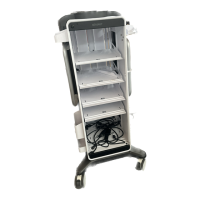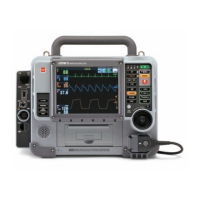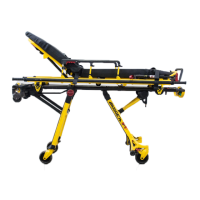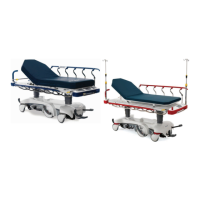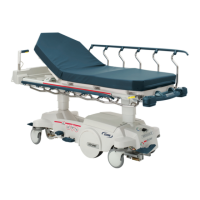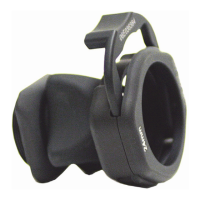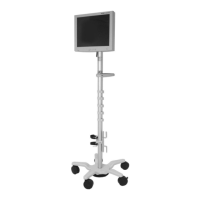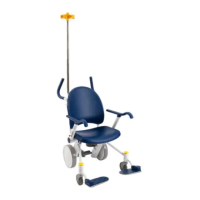Service Information
29
LOGIC CIRCUIT BOARD REPLACEMENT
Logic Circuit Board Part Number 1550−80−940
Required Tools:
Standard Screwdriver 5/32” Allen Wrench 7/64” Allen Wrench
Procedure:
1. Unplug the power cord from the wall socket. Properly ground yourself (see page 11).
2. Lift the foot section and pivot it back, securing it with a string or cord. Using a 5/32” Allen wrench, remove
the four screws and two Knee Gatch guides from the sides of the motor/board enclosure cover. Using a
standard screwdriver, remove the two sheet metal screws holding the cover to the foot end frame tube
and remove the cover.
3. Disconnect all cables and connectors from the logic circuit board, noting their locations so they will be re
connected properly.
4. Using a 7/64” Allen wrench, remove the 6 Allen screws on the bottom of the motor/board enclosure. Lift
the logic circuit board out of the enclosure.
5. Reverse the above steps to install the new circuit board. Reinstall the enclosure cover and Knee Gatch
guides with the four socket head cap screws. When reinstalling the Knee Gatch guides, be sure the large
hole in the guide is toward the foot (crank) end with the ridged side of the guide facing out. Install the two
sheet metal screws. Test all bed functions before returning the stretcher to service.
SIDERAIL LATCH ADJUSTMENT
Required Tools:
1/8 Hex Allen Wrench
WARNING
The siderail latch adjustment is pre−set at the factory, and there should not normally be a need for readjust-
ment. If adjustment must be done it is important to follow the procedure below. If it is not done properly, injury
to the patient or user could occur.
Adjustment Procedure:
1. Using a 1/8” hex Allen wrench, adjust the hex Allen screw located on the latch assembly opposite the latch.
Turning the Allen screw clockwise will DECREASE the amount of play in the latching mechanism. Turning
counterclockwise will INCREASE the amount.
NOTE
The amount of play in the siderail, when in full up engaged position, should be approximately 1/8” to 3/16”.
CAUTION
Too much play when the siderail is in the full up engaged position will give the siderail the appearance of being
unstable and could also cause premature wearing of the latch system.
Too little play will obstruct the latch and keep it from engaging completely in the full up position, which may
cause damage to the latch and/or injury to the patient or user.
Return to Table of Contents
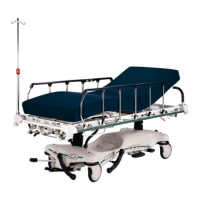
